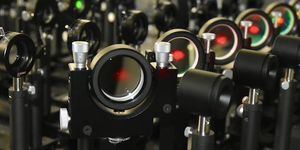Which individual cells are to blame for atherosclerosis?
The immune cells that are partly responsible for clogging arteries in a disease called atherosclerosis are under investigation. From the University of Wurzburg, scientists have described a completely new class of macrophages, a type of immune cell.
Atherosclerosis affects the blood vessels and is a precursor to heart disease, the leading cause of death for men and women worldwide. Fatty deposits called plaques (containing cholesterol, cellular waste products, calcium, fibrin, and other fatty substances) clog up arteries and lead to heart attack and stroke. The risk factors for atherosclerosis have been studied thoroughly and are well understood: a high fat diet, lack of physical activity, and regular smoking habits.
Researchers from the present study were interested in identifying which specific cells are involved with atherosclerosis and how they initiate the development of the disease. They started by investigating the macrophage populations in atherosclerotic vessels.
"It has already been suspected that different macrophage subsets are at work in atherosclerotic vessels where they assume different tasks," explained Clement Cochain and Alma Zernecke-Madsen.
They used a technique called single-cell RNA sequencing to identify three different macrophage populations that impact how atherosclerosis develops, something scientists had not been able to do before due to a lack of appropriate biomarkers. This technology allows researchers to visualize individual cells and the RNA molecules within them, analyzing their gene expression through high-frequency sequencing. If scientists can understand their gene expression, they can learn more about their function in the context of atherosclerosis.
Researchers used single-cell RNA sequencing with samples taken from healthy aortas and atherosclerostic aortas. In the diseased blood vessels, researchers found monocytes which differentiate into macrophages, and dendritic cells, which differentiate from macrophages. In the healthy blood vessels, researchers found local macrophages and other immune cells.
With a distinction made between the types of immune cells in healthy versus atherosclerotic blood vessels, researchers hope they can quickly improve how they understand, diagnose, and treat atherosclerosis as early as possible.
"These findings open up new possibilities to study these cell populations and their respective functions during atherosclerosis in greater detail now," said Alma Zernecke-Madsen.
The present study was published in the journal Circulation Research.









